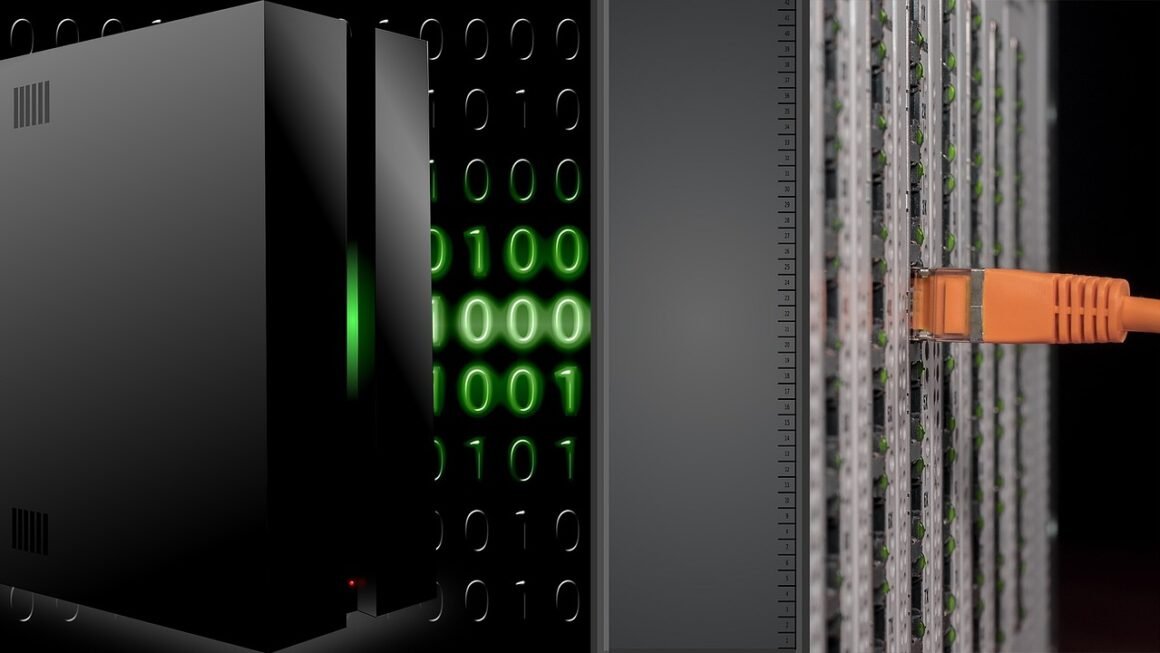Cybercrime is no longer a futuristic threat lurking in the shadows of the internet; it’s a pervasive reality impacting individuals, businesses, and governments worldwide. From sophisticated ransomware attacks crippling entire infrastructures to subtle phishing scams emptying bank accounts, understanding the multifaceted nature of cybercrime is crucial for proactive defense and mitigation. This blog post delves into the various types of cybercrime, the methods used by cybercriminals, and the steps you can take to protect yourself and your organization.
Understanding the Landscape of Cybercrime
Defining Cybercrime
Cybercrime, also known as computer crime, encompasses any illegal activity involving a computer or network. This broad definition includes offenses ranging from data theft and fraud to the distribution of malware and attacks on computer systems. The consequences of cybercrime can be devastating, leading to financial losses, reputational damage, and even disruption of essential services.
The Growing Threat: Cybercrime Statistics
The rise of cybercrime is alarming. According to recent reports, cybercrime costs the global economy trillions of dollars annually, and this figure is only projected to increase. Some key statistics highlight the severity of the situation:
- The average cost of a data breach for a company is millions of dollars.
- Ransomware attacks are increasing year-over-year, targeting businesses of all sizes.
- Small and medium-sized businesses (SMBs) are particularly vulnerable, often lacking the resources for robust cybersecurity measures.
- Phishing remains a highly effective attack vector, with millions of phishing emails sent daily.
Common Types of Cybercrime
Phishing Attacks
Phishing is a deceptive tactic where cybercriminals attempt to trick individuals into revealing sensitive information, such as usernames, passwords, and credit card details. These attacks often involve emails, text messages, or fake websites that mimic legitimate entities.
- Example: An email appearing to be from your bank asks you to update your account information by clicking on a link. The link leads to a fraudulent website designed to steal your credentials.
- Protection: Always verify the sender’s address, be wary of unsolicited requests for personal information, and hover over links before clicking to check their destination. Enable multi-factor authentication whenever possible.
Malware: Viruses, Worms, and Trojans
Malware, short for malicious software, encompasses various types of harmful programs designed to infiltrate and damage computer systems.
- Viruses: Attach themselves to legitimate files and spread when the infected file is executed.
- Worms: Self-replicating and can spread across networks without human intervention.
- Trojans: Disguise themselves as legitimate software but perform malicious actions in the background.
- Example: Downloading a seemingly harmless game from an untrusted source, which installs a keylogger that records your keystrokes and sends them to a cybercriminal.
- Protection: Install and regularly update antivirus software, avoid downloading files from unknown sources, and be cautious when opening email attachments.
Ransomware Attacks
Ransomware is a type of malware that encrypts a victim’s files, rendering them inaccessible. The attackers then demand a ransom payment in exchange for the decryption key.
- Example: A ransomware attack encrypts all the files on a company’s servers, demanding a hefty ransom in cryptocurrency.
- Protection: Implement robust data backups, practice the 3-2-1 rule (three copies of your data, on two different media, with one copy offsite), educate employees about phishing scams, and keep software up to date.
Denial-of-Service (DoS) and Distributed Denial-of-Service (DDoS) Attacks
DoS and DDoS attacks aim to overwhelm a target server or network with a flood of traffic, rendering it unavailable to legitimate users.
- Example: A DDoS attack floods a website with millions of requests, causing it to crash and become inaccessible to customers.
- Protection: Implement network security measures such as firewalls, intrusion detection systems (IDS), and content delivery networks (CDNs).
Identity Theft
Identity theft involves stealing someone’s personal information, such as their Social Security number, credit card details, or driver’s license, and using it for fraudulent purposes.
- Example: A cybercriminal uses stolen credit card information to make unauthorized purchases.
- Protection: Monitor your credit reports regularly, use strong and unique passwords, shred sensitive documents, and be cautious about sharing personal information online.
Defending Against Cybercrime: Best Practices
Strong Passwords and Multi-Factor Authentication
- Passwords: Use strong, unique passwords for each online account. A strong password should be at least 12 characters long and include a combination of uppercase and lowercase letters, numbers, and symbols. Consider using a password manager to securely store and manage your passwords.
- Multi-Factor Authentication (MFA): Enable MFA whenever possible. MFA adds an extra layer of security by requiring a second form of verification, such as a code sent to your phone, in addition to your password.
Software Updates and Patch Management
Regularly update your operating system, software applications, and security software. Software updates often include security patches that address vulnerabilities exploited by cybercriminals. Enable automatic updates whenever possible.
Educate Yourself and Your Team
Cybersecurity awareness training is crucial for preventing cybercrime. Educate yourself and your employees about the latest threats, phishing scams, and best practices for online safety. Conduct regular training sessions and simulated phishing exercises to reinforce good habits.
- Actionable Takeaway: Implement regular cybersecurity training for all employees, covering topics such as phishing awareness, password security, and data handling.
Data Backups and Disaster Recovery
Regularly back up your data and store it in a secure location, preferably offsite. In the event of a ransomware attack or other data loss incident, you can restore your data from the backup. Develop a disaster recovery plan to ensure business continuity in the event of a cyberattack.
Implement a Firewall and Intrusion Detection System
A firewall acts as a barrier between your network and the outside world, blocking unauthorized access. An intrusion detection system (IDS) monitors network traffic for suspicious activity and alerts you to potential threats.
Monitor Your Online Accounts
Regularly monitor your bank accounts, credit card statements, and credit reports for suspicious activity. Report any unauthorized transactions or suspected identity theft to the relevant authorities immediately.
The Role of Law Enforcement in Combating Cybercrime
Law enforcement agencies play a crucial role in investigating and prosecuting cybercrime. They work to identify and apprehend cybercriminals, disrupt their operations, and recover stolen assets. International cooperation is essential for combating cybercrime, as cybercriminals often operate across borders.
- Example: The FBI and Interpol collaborate to investigate and dismantle international cybercrime rings.
- Actionable Takeaway: Report any cybercrime incidents to the appropriate law enforcement agencies, such as the FBI’s Internet Crime Complaint Center (IC3).
Conclusion
Cybercrime is a constantly evolving threat that requires vigilance and proactive measures. By understanding the different types of cybercrime, implementing best practices for cybersecurity, and staying informed about the latest threats, individuals and organizations can significantly reduce their risk of becoming victims. Remember, cybersecurity is not just an IT issue; it’s a shared responsibility that requires everyone’s participation. Stay safe online!



